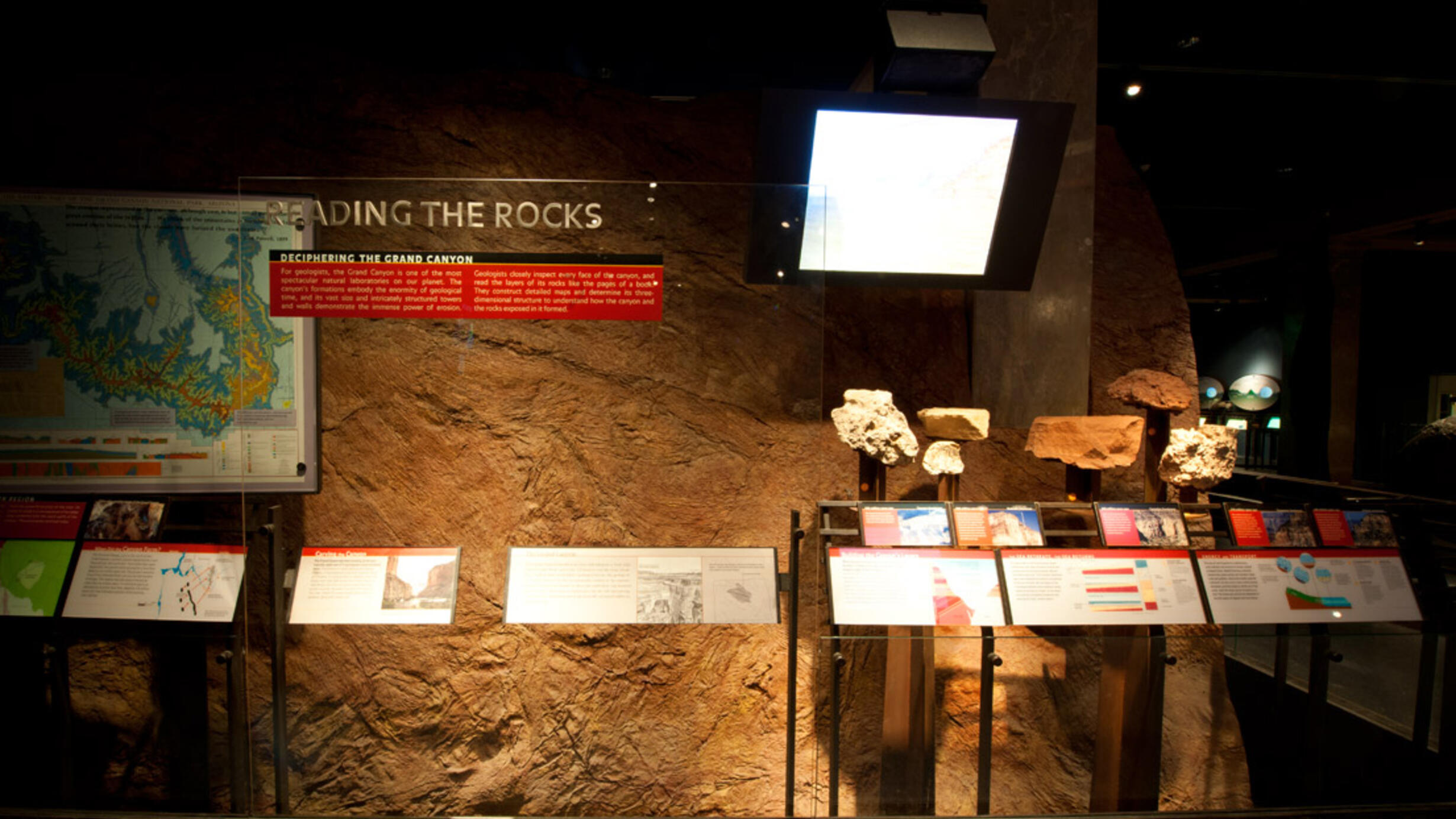Deciphering the Grand Canyon
Part of Hall of Planet Earth.

For geologists, the Grand Canyon is one of the most spectacular natural laboratories on our planet. The canyon's formations embody the enormity of geological time, and its vast size and intricately structured towers and walls demonstrate the immense power of erosion. Geologists closely inspect every face of the canyon, and read the layers of its rocks like the page of a book. They construct detailed maps and determine its three-dimensional structure to understand how the canyon and the rocks exposed in it formed.
The Grand Canyon Region
The Colorado Plateau is an uplifted area of flat plains, broad mesas, great canyons, and spectacular vistas. As the plateau rose, the Colorado River cut its way downward, creating the mile-deep chasm of the Grand Canyon. This extraordinary depth resulted from the powerful erosion of the river. Its power to erode is a consequence of its steep drop combined with the rapid uplift of the plateau. These processes continue today.
Carving the Canyon
The Grand Canyon has been eroding at the geologically rapid rate of 3 centimeters every hundred years. The erosion is rapid because the Kaibab Plateau, a high tableland that encompasses northern Arizona, is rising quickly. In addition, the river drops more than 600 meters from Lake Powell to Lake Mead, and thus its rapid current has great power to erode. Boulders from the cliffs fall into the river, where the water breaks them down to pebbles, sand, and finally, silt.
Scientists at Work: Grand Canyon
The Grand Canyon extends more than 400 kilometers, from Lake Powell to Lake Mead, and it cuts 2 kilometers into the crust, revealing 1.7 billion years of the Earth's geological history. The geology of the Grand Canyon was first systematically studied by the explorer-geologist John Wesley Powell, in three epic exploratory trips between 1869 and 1872. More than a century later, we are still interpreting the details of its formation and of the fossil life contained within its steep rock walls.
In this video, Dr. James Webster from the American Museum of Natural History explores the Grand Canyon in Arizona with Dr. George Billingsley from the United States Geological Survey and Dr. Steven Reynolds from Arizona State University.
This video was produced in 1999 for the David S. and Ruth L. Gottesman Hall of Planet Earth at the American Museum of Natural History.
photo credit: Denis Finnin, © American Museum of Natural History
photo credit: Denis Finnin, © American Museum of Natural History
photo credit: Denis Finnin, © American Museum of Natural History
photo credit: Denis Finnin, © American Museum of Natural History
photo credit: Denis Finnin, © American Museum of Natural History
photo credit: Denis Finnin, © American Museum of Natural History
photo credit: Craig Chesek © American Museum of Natural History
photo credit: Craig Chesek, © American Museum of Natural History
photo credit: Craig Chesek, © American Museum of Natural History